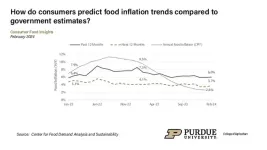(Press-News.org) Although COVID-19 has faded from the headlines, SARS-CoV-2 – the coronavirus behind the pandemic – is still rampantly infecting people around the world. Public health officials fear as the virus continues to evolve, it will eventually hit upon a diabolical mutation that renders current treatments ineffective, triggering a new wave of severe infection and social disruption.
In pursuit of new therapies to avoid this dark fate, researchers at Stanford have now unveiled a compound that measures up as a potentially powerful anti-coronavirus drug, detailed in a paper published March 13 in Science Translational Medicine. Dubbed ML2006a4, the compound works in the same way as Paxlovid – the most effective oral drug available to date – by binding to coronavirus particles and preventing the virus from making copies of itself. Compared to Paxlovid, though, ML2006a4 binds more tightly and durably, courtesy of the Stanford team custom-crafting the compound atom-by-atom.
In preclinical experiments, the compound prevented deadly infections in mice at a superior rate compared to Paxlovid. In addition, the new compound is potent enough that it could likely be formulated without an additional component present in Paxlovid that poses severe drug interaction concerns. Importantly, ML2006a4 also performed well against coronavirus variants that have already evolved degrees of resistance to Paxlovid, suggesting the compound’s honed affinity makes it less vulnerable to mutant virus strains.
“At this point entering the fifth year of the pandemic, Paxlovid is our only really good drug against SARS-CoV-2, but it’s proven fairly easy for the virus to evolve resistance to it,” said Michael Lin, the senior author of the study, who is an associate professor of neurobiology and of bioengineering in the schools of Medicine and Engineering and a member of Stanford Bio-X. “As new waves of coronavirus keep crashing down, we need to have alternative drugs that are more tolerant of mutations and not as easy for the virus to defeat.”
For the study, Lin worked closely with lead author Michael Westberg, now an assistant professor at Aarhus University in Denmark. From 2018 until 2022, Westberg worked in Lin’s lab as a visiting scholar at Stanford Bio-X, funded by the Novo Nordisk Foundation, through a joint program designed to strengthen international collaborations and the exchange of scientific expertise between Stanford and Denmark.
Atomic-level precision
Before the pandemic outbreak in 2020, Lin’s lab had already been investigating the broad class of drugs known as viral protease inhibitors. These drugs target protease enzymes that viruses need for disassembling bulky viral proteins as part of their replication cycle. Like a key fitting into a lock, protease inhibitors occupy the spaces, or active sites, where proteases normally link up with those bulky proteins, thus nipping replication in the bud.
Specifically, the Stanford researchers had gained familiarity with hepatitis C virus protease, which has similarities to coronavirus versions. Although Westberg had come to Stanford to work on other projects, the global emergency prompted a pivot. “When the pandemic hit, we asked if we could put our expertise to good use,” said Lin.
Their early research, posted online in September 2020, demonstrated that a hepatitis C drug, boceprevir, slotted reasonably well into the coronavirus protease site. Other scientists built off those findings, including at the pharmaceutical company Pfizer, which ultimately created Paxlovid and received regulatory approval for its use in December 2021. “We knew then that we were on the right track,” said Lin, “and we were motivated to keep going and make an even more effective drug.”
The Lin lab pooled its collective chemical knowledge to design improvements to their iterative boceprevir-based compounds. Much of the work involved modifying the compound on the atomic scale in intricately detailed computer models to fit more snugly in the coronavirus protease active site.
“Basically, you put your drug in the active site and you look for gaps where it doesn’t tightly fit. Then you fill those gaps,” said Lin.
The Stanford researchers approached this challenge in a rational way by adding different configurations of atoms of carbon, nitrogen, and oxygen to the compounds as permitted by the laws of biochemistry.
“There’s a lot of creativity and intuition involved because everyone is working with the same three atoms, but there are essentially infinite ways to arrange them,” said Lin. “Making these modifications, it’s like playing atomic Tetris.”
The resulting compounds were then tested against actual coronavirus particles at the Stanford In Vitro Biosafety Level 3 Service Center. After multiple rounds of honing, Lin’s team arrived at the compound designated ML2006a4.
A promising drug candidate
In studies with SARS-CoV-2-infected mice, ML2006a4 worked as well as Paxlovid in promoting survival, while offering better protection of the rodents’ lungs and lowering overall virus load in the body.
The researchers attribute this success to ML2006a4’s extremely refined fit inside coronavirus protease, where the compound boasted a 20-fold higher binding affinity than Paxlovid. That better fit equates to stronger chemical bonds, meaning the drug can stay bound to the protease for a longer time. In this temporal regard, ML2006a4 indeed proved quite sticky: The inhibitor remained attached for approximately 330 minutes, or greater than five hours, whereas the corresponding Paxlovid inhibitor typically fell off its target in just about two minutes.
From a medication perspective, such staying power translates to spaced-out, smaller doses that can still prevent disease from worsening while giving the immune system a chance to kill off the invaders. “The long-lived drug-enzyme complex helps ensure that the virus doesn’t escape and replicate before your next medication dose,” said Lin.
In this way, ML2006a4 offers other advantages compared to Paxlovid. Technically, Paxlovid is two drugs packaged together: nirmatrelvir, the actual protease inhibitor, and ritonavir, a drug that prevents the liver from quickly breaking down nirmatrelvir, boosting nirmatrelvir’s performance. Yet the slowing of the liver’s metabolism by ritonavir means that other drugs can toxically build up, forcing patients to take the risk of temporarily stopping their normal medications.
According to Lin, an oral pill based on ML2006a4 might not require ritonavir to prop up drug levels enough between typical 12-hour administrations to effectively keep coronavirus in check, but “this would need to be tested to make sure,” said Lin. “We also continue to make improved versions of ML2006a4 with better potency and duration of activity,” he added.
For the promising compounds to move forward, Lin and colleagues are seeking additional investment. So far, their funding has mostly consisted of small grants geared toward early-stage drug discovery. The group now feels their compounds are ready for expanded preclinical testing with an eye toward clinical trials in human patients.
“We’re very excited how far we’ve come and how successful our drug discovery has been on a shoestring budget,” said Lin. “We hope to see this promising compound developed further to stay ready for what SARS-CoV-2 throws at us next.”
Additional Stanford co-authors on the paper include Shirit Einav, professor of medicine – infectious diseases and of microbiology and immunology; Catherine Blish, the George E. and Lucy Becker Professor in Medicine and professor of medicine – infectious diseases; Jaishree Garhyan, director of Biosafety Level 3 (BSL3) Service; Daniel Fernandez, director of crystallography; Puja Bhavesh Patel, research professional; Chenzhou Hao, research scientist; doctoral student Yan Wu; postdoctoral scholars Xinzhi Zou, Chieh-Wen Lo, and Marwah Karim; instructor in medicine Arjun Rustagi; former postdoctoral scholars Yichi Su and Lin Ning; and former researcher Aimee Beck. Lin is also an associate professor, by courtesy, of chemical and systems biology, and a member of the Cardiovascular Institute, the Maternal & Child Health Research Institute, Sarafan ChEM-H, the Stanford Cancer Institute, and the Wu Tsai Neurosciences Institute.
Funding for the research was provided by Stanford’s Sarafan ChEM-H and the Innovative Medicines Accelerator, a Harrington Scholar-Innovator Award, Emergent Ventures at the Mercatus Center at George Mason University, a Stanford-Coulter Translational Research Grant, the National Institutes of Health, the Denver Foundation, the Novo Nordisk Foundation and the Stanford Bio-X Program, a Bio-X Stanford Interdisciplinary Graduate Student Fellowship, the Houston EM Foundation, and the PhRMA Foundation.
To read all stories about Stanford science, subscribe to the biweekly Stanford Science Digest.
END
Drug design at the atomic level to thwart COVID-19
2024-03-13
ELSE PRESS RELEASES FROM THIS DATE:
SwRI receives $2 million NASA grant to develop lunar-regolith-measuring instrument
2024-03-13
SAN ANTONIO — March 13, 2024 —Southwest Research Institute (SwRI) has been awarded a three-year, $2,041,000 grant from NASA’s Development and Advancement of Lunar Instrumentation (DALI) program to further develop a novel ground-penetrating radar instrument. The Synthetic Pulse Artemis Radar for Crustal Imaging (SPARCI, pronounced “sparky”) instrument is designed to characterize the depth of the regolith and upper megaregolith, the upper broken-up layers of lunar crust associated with ...
ANYmal can do parkour and walk across rubble
2024-03-13
ANYmal has for some time had no problem coping with the stony terrain of Swiss hiking trails. Now researchers at ETH Zurich have taught this quadrupedal robot some new skills: it is proving rather adept at parkour, a sport based on using athletic manoeuvres to smoothly negotiate obstacles in an urban environment, which has become very popular. ANYmal is also proficient at dealing with the tricky terrain commonly found on building sites or in disaster areas.
To teach ANYmal these new skills, two teams, both from the group led by ETH Professor Marco Hutter of the Department of Mechanical and Process Engineering, followed different approaches.
Exhausting the mechanical options
Working ...
Scientists unravel mystery of drug response in small cell lung cancer
2024-03-13
Small cell lung cancer (SCLC) is a highly aggressive tumour of the lung that occurs especially in heavy smokers. Due to the rapid spread of this tumour type, most patients can only be treated with chemotherapy with remarkable initial anti-tumour efficacy. However, relapse often occurs over the course of time. A research team at the University of Cologne led by Professor Dr Roman Thomas, director of the Department of Translational Genomics and speaker of the Collaborative Research Center 1399 (CRC 1399, ...
Peter Flemings wins Robert R. Berg Outstanding Research Award
2024-03-13
Jackson School of Geosciences Professor Peter Flemings is the recipient of the 2024 Robert R. Berg Outstanding Research Award, a top honor bestowed by the American Association of Petroleum Geologists, a worldwide professional association.
Over the course of his career, Flemings has worked to apply his academic research to effect real-world breakthroughs. His work analyzing how pressure within Earth’s crust is controlled by geology and fluid flow, for example, shaped how oil companies now safely search for hydrocarbons.
Flemings and his students explored how the evolution of rock layers controls the flow of fluids within them and the distribution ...
Study shows important role gut microbes play in airway health in persons with cystic fibrosis
2024-03-13
Findings from a new study conducted by a team of researchers at Dartmouth’s Geisel School of Medicine and published in the journal mBio, reflect the important role that the gut microbiome (communities of bacteria) plays in the airway health of persons with cystic fibrosis.
Cystic fibrosis is an inherited disease that causes sticky, thick mucus to build up in the lungs and other organs, causing persistent infections that can be deadly. Until relatively recently, CF microbiology research has largely ...
With discovery of roundworms, Great Salt Lake’s imperiled ecosystem gets more interesting
2024-03-13
Scientists have long suspected nematodes, commonly known as roundworms, inhabit Utah’s Great Salt Lake sediments, but until recently, no one had actually recovered any there.
It took a University of Utah postdoc with a hammer and loads of field experience to solve the puzzle. Along with biology professor Michael Werner, postdoctoral researcher Julie Jung announced in a study published March 13 that they discovered thousands of tiny worms in the lake’s microbialites, those reef-like structures that cover about a fifth of the lakebed.
Their initial attempts failed to find nematodes in lakebed sediments, prompting Jung to take a hammer to samples ...
Most consumers continue to expect rising food prices
2024-03-13
Most U.S. consumers surveyed in February 2024 predicted that they would see an increase in food prices over the next 12 months. Sixty-four percent of respondents predict food prices to rise in the next year, and the average predicted increase is 3.7%, according to the February Consumer Food Insights Report.
The survey-based report out of Purdue University’s Center for Food Demand Analysis and Sustainability assesses food spending, consumer satisfaction and values, support of agricultural and food policies and trust in information sources. Purdue experts conducted and evaluated the survey, which ...
Innovative approaches for addressing difficult topics in K-12 schools
2024-03-13
UNIVERSITY PARK, Pa. — Three peer-reviewed journals have recently published research papers by Penn State’s Hammel Family Human Rights Initiative. The papers illustrate how the initiative’s programs help K-12 educators address difficult issues such as racism.
The three journals that published the initiative papers are School-University Partnerships, Journal of Practitioner Research and Journal of Teacher Education. JTE, as it’s known, is widely considered the top-ranked research journal in the field of teacher education. Some of the scholars who independently ...
Methane emissions from U.S. oil and gas operations cost the nation $10 billion per year
2024-03-13
Oil and gas operations across the United States are emitting more than 6 million tons per year of methane, the main component of natural gas and the most abundant greenhouse gas after carbon dioxide, according to Stanford-led research published March 13 in Nature.
These emissions, which result from both intentional vents and unintentional leaks, amount to $1 billion in lost commercial value for energy producers. The annual cost rises to $10 billion when researchers account for harm to the economy and human well-being caused by adding this amount of heat-trapping methane ...
Explaining a supernova's 'string of pearls'
2024-03-13
Images
Physicists often turn to the Rayleigh-Taylor instability to explain why fluid structures form in plasmas, but that may not be the full story when it comes to the ring of hydrogen clumps around supernova 1987A, research from the University of Michigan suggests.
In a study published in Physical Review Letters, the team argues that the Crow instability does a better job of explaining the "string of pearls" encircling the remnant of the star, shedding light on a longstanding astrophysical mystery.
"The fascinating ...




